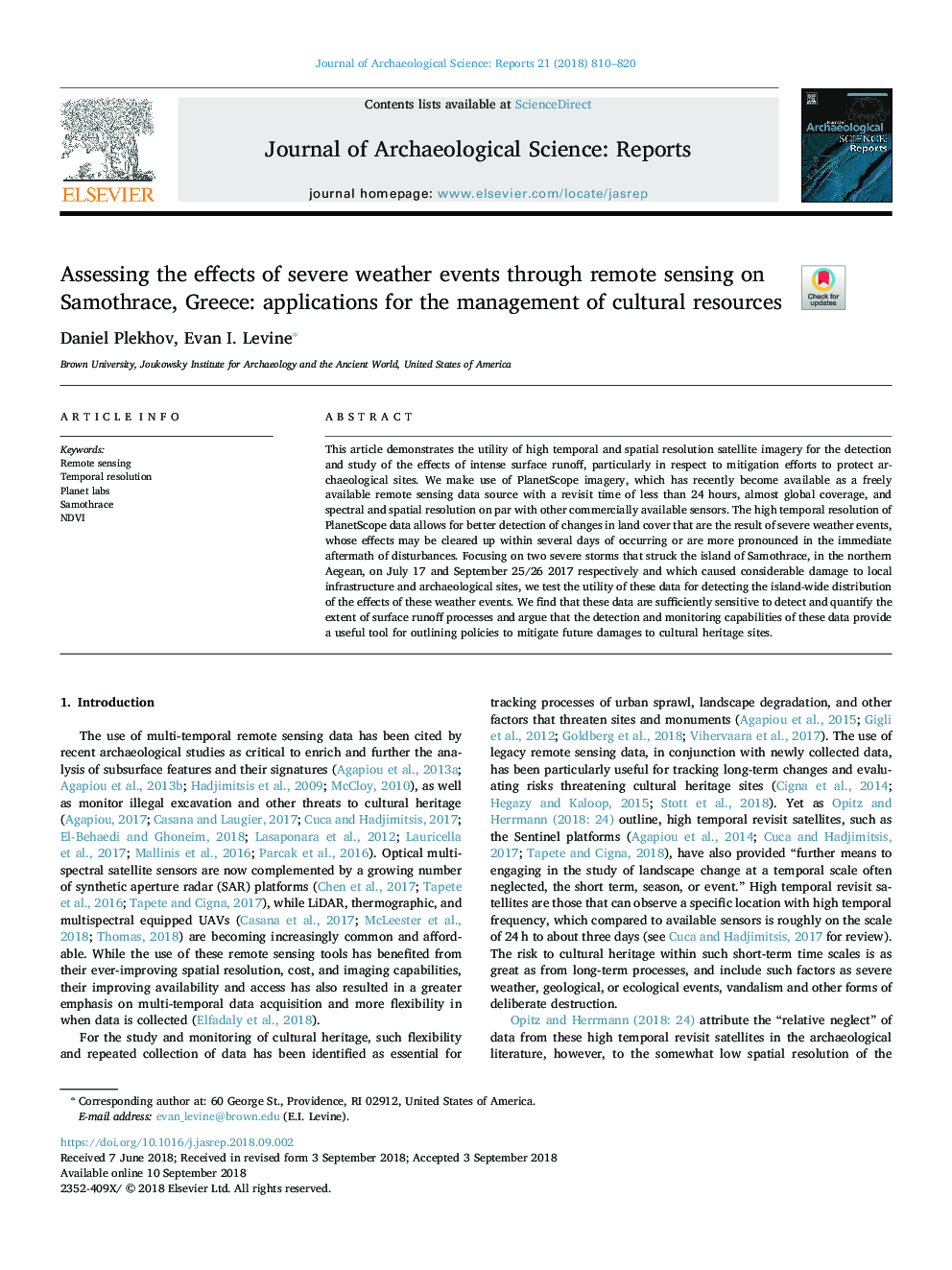| Article ID | Journal | Published Year | Pages | File Type |
|---|---|---|---|---|
| 11005185 | Journal of Archaeological Science: Reports | 2018 | 11 Pages |
Abstract
This article demonstrates the utility of high temporal and spatial resolution satellite imagery for the detection and study of the effects of intense surface runoff, particularly in respect to mitigation efforts to protect archaeological sites. We make use of PlanetScope imagery, which has recently become available as a freely available remote sensing data source with a revisit time of less than 24 hours, almost global coverage, and spectral and spatial resolution on par with other commercially available sensors. The high temporal resolution of PlanetScope data allows for better detection of changes in land cover that are the result of severe weather events, whose effects may be cleared up within several days of occurring or are more pronounced in the immediate aftermath of disturbances. Focusing on two severe storms that struck the island of Samothrace, in the northern Aegean, on July 17 and September 25/26 2017 respectively and which caused considerable damage to local infrastructure and archaeological sites, we test the utility of these data for detecting the island-wide distribution of the effects of these weather events. We find that these data are sufficiently sensitive to detect and quantify the extent of surface runoff processes and argue that the detection and monitoring capabilities of these data provide a useful tool for outlining policies to mitigate future damages to cultural heritage sites.
Related Topics
Social Sciences and Humanities
Arts and Humanities
History
Authors
Daniel Plekhov, Evan I. Levine,
